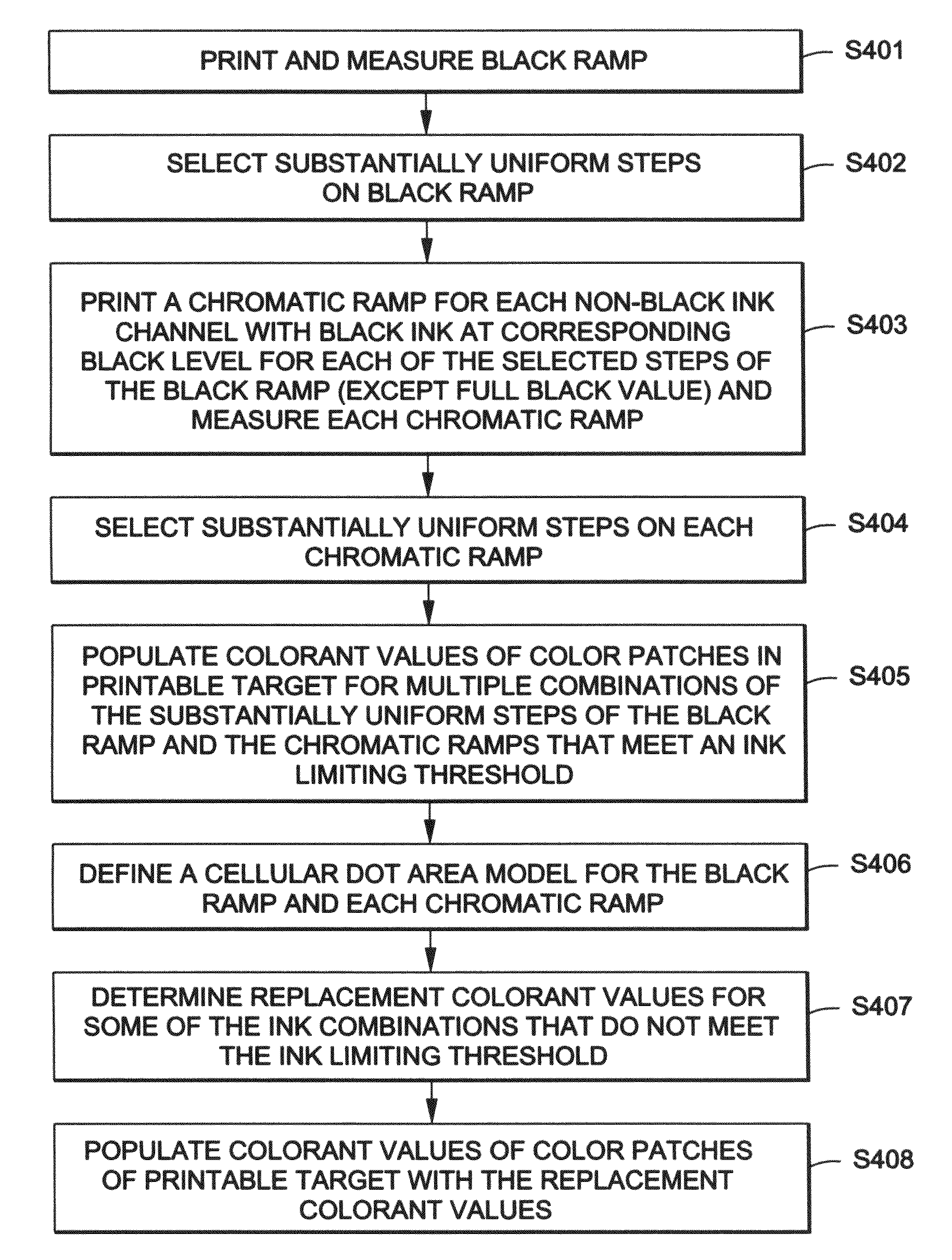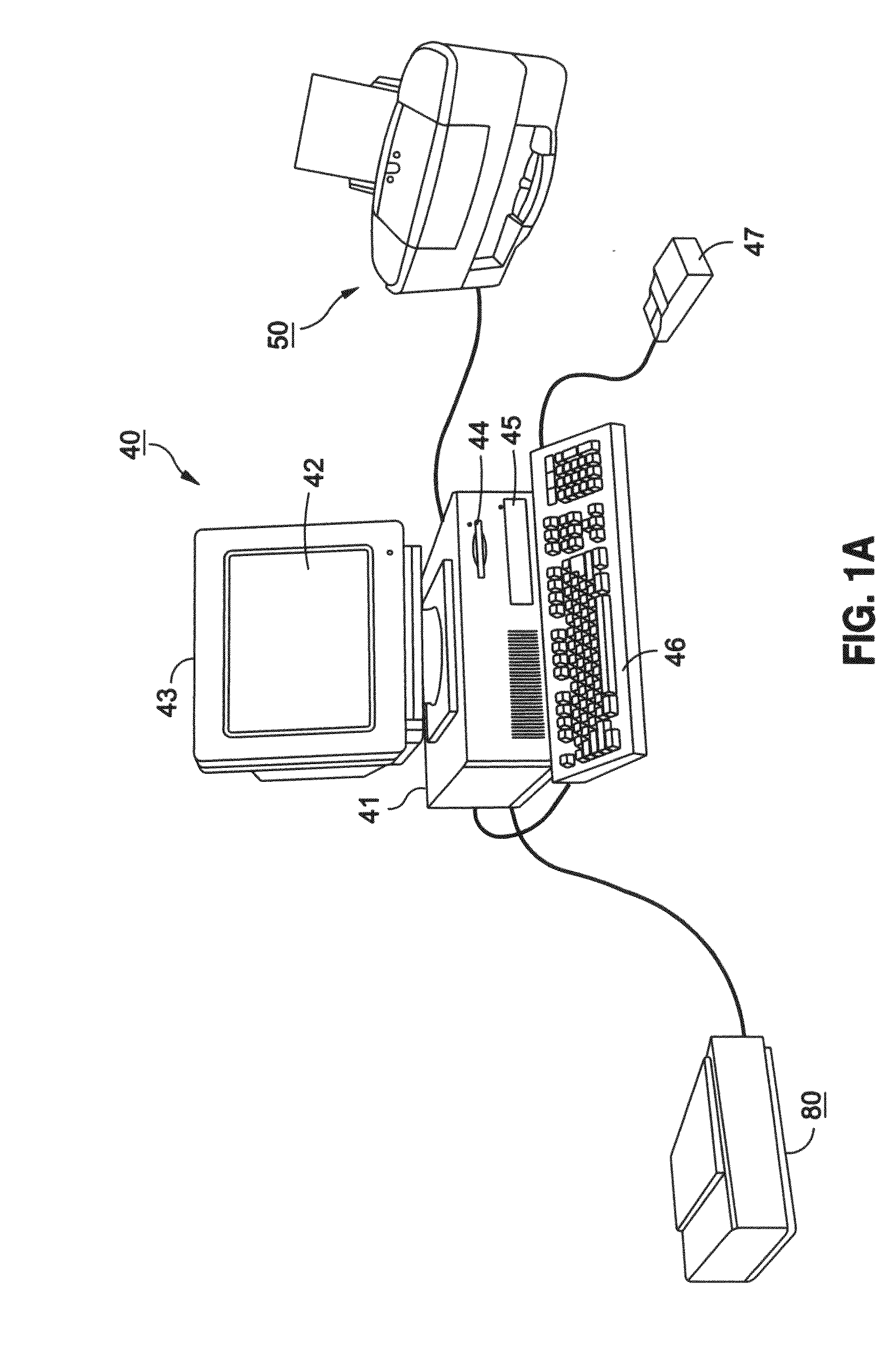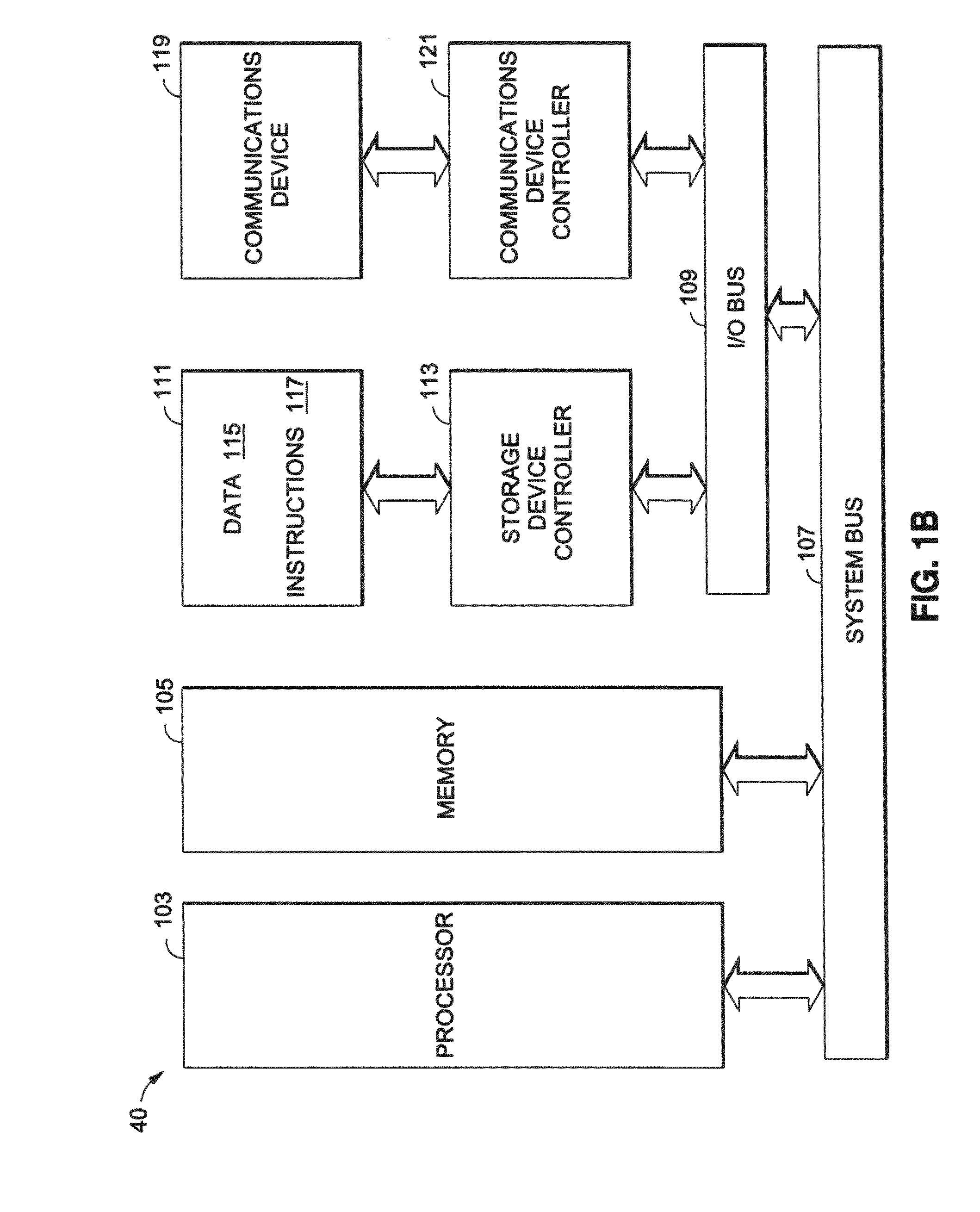[0007]In keeping with the above concerns, one aspect of the present invention involves a rational selection of colorant values for the color patches of a color characterization target, wherein the selection is made so as to result in a practicable number of color patches that tend to fill the printer
color space, so as to yield good color characterization of the printer.
[0010]According to one aspect, with respect to the application of
principal component analysis (PCA) to the measured color values, there is an advantageous effect in that PCA analysis will yield a first principal component which provides a measure of separation in each colorant channel through automatic
data analysis, without the need to know the actual color of the colorant channel. In addition, because PCA is an
orthogonal transformation, PCA tends to preserve distances in
color space, whether it is in the format of calorimetric, perceptual or spectral.
[0011]In another aspect, with respect to the selection of substantially uniform steps that are substantially invariant to small variations in a first principal component, there is an advantageous effect in which the chosen steps tend to remain constant even across different measurements of a particular printer. More precisely, an ordinary approach to determination of steps for each colorant channel is to determine steps in the colorant channel that are precisely equal to each other when measured in some predetermined
color space which may be calorimetric, perceptual or spectral. Such an approach would result in different steps in the colorant channels for each different run of measurements of the same printer, since the determination of steps would then depend sensitively on the
linearization curves. Different runs of measurements would therefore likely generate slightly different steps in the colorant channels. While such differences might not be significant to ensuing colorimetric or perceptual uniformity, such differences can often cause difficulties to color scientists and printer R&D engineers, who are trying to compare one run against another. For color scientists and printer R&D engineers, therefore, an advantageous effect of identifying substantially uniform steps, as opposed to strictly uniform steps, is that the steps in the colorant channel tend to be identical from one run of a
color target generation to another run of a different target generation, allowing more direct comparisons of multiple runs.
[0012]In another aspect, with respect to the non-black ink combinations at different black levels, there is an advantageous effect by including a relatively greater number of substantially uniform steps for each chromatic ramp at smaller values of the
black level, and having a relatively smaller number of substantially uniform steps for each chromatic ramp at larger values of the
black level. More precisely, an advantageous effect is obtained in which colorant combinations tend to be excluded, hence reducing the number of color patches in the target, for high values of the black channel. Furthermore, this tends to exclude very
dark color patches, whose measurements tend to be noisy and thus detrimentally affect mapping anyway. At the same time, because of this adjustment, although color patches are excluded, the resulting printable target tends to have colors that are more evenly spaced in a device independent color space such as a CIELAB color space.
[0014]As a result, with respect to determining replacement colorant values, there is an advantageous effect obtained by replacing the colorant values for at least some of the multiple combinations of the substantially uniform steps of the black channel and of the chromatic channels at the corresponding black levels that do not meet the ink limiting threshold. More precisely, an ordinary approach to selection of color patches for color characterization is to discard all colors that do not meet the ink limiting threshold. The advantageous effect is obtained here by including more color patches to populate the LUT and therefore creating a more accurate characterization of the color printer.
[0018]According to this aspect, the definition of a cellular dot area model by applying a Yule-Nielsen model to each
cell between the substantially uniform steps on a ramp provides an advantageous effect in which the dot area model provides better prediction than those created under the traditional approach. More precisely, a more traditional approach to defining a dot area model might be the application of a Yule-Nielsen model to the whole ramp, using only the minimum and the maximum values of the ramp. Such models can provide a coarse prediction of dot area corresponding to a colorant value. Applying the Yule-Nielsen model to each
cell between the substantially uniform steps on a ramp, and by using the values from each step, allows the model to make use of a larger set of measurements and therefore, improves the overall accuracy of the model.
 Login to View More
Login to View More  Login to View More
Login to View More 


